Physical Address
304 North Cardinal St.
Dorchester Center, MA 02124
Physical Address
304 North Cardinal St.
Dorchester Center, MA 02124

 Ronald Díaz/ Conservation International
Ronald Díaz/ Conservation InternationalAn amphibian mouse with webbed feet and a ball-headed fish are among the 27 new species scientists have discovered in Peru.
They were found on an expedition to Alto Mayo, which includes the Amazon rainforest, by scientists from the nonprofit Conservation International and members of local indigenous groups.
Up to 48 other new species may also have been found, although more studies will be needed to determine if they are new, Conservation International says.
“Discovering so many new species of mammals and vertebrates is truly incredible, especially in a landscape with so much human influence,” said Trond Larsen, senior director at Conservation International.
Alto Mayo is a protected area in northern Peru with multiple ecosystems and indigenous territories.
It has a relatively high population density, putting pressure on environmentalism through deforestation and agricultural expansion, Conservation International said.
Yulisa Tuwi, an Awajún woman who helped with the research, said the report “allows the Awajún to protect our culture, our natural resources and our territory” by giving them a better understanding of ecosystems.
“(The Awajún) have extensive traditional knowledge about the forests, animals and plants they live with,” Mr. Larsen said.
The expedition also found a new species of dwarf squirrel, eight types of fish, three amphibians and 10 types of butterflies.
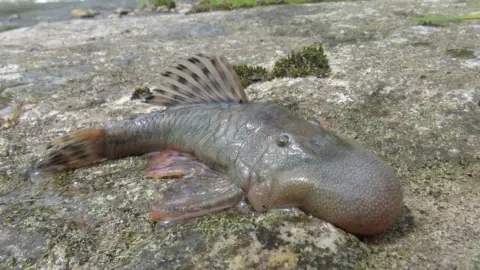 Robinson Olivera/ Conservation International
Robinson Olivera/ Conservation InternationalThis “ball-headed” fish is a new discovery for science, but the Awajún indigenous people who helped with the expedition already knew of its existence.
Fish scientists were particularly surprised by its enlarged head, something they had never seen before.
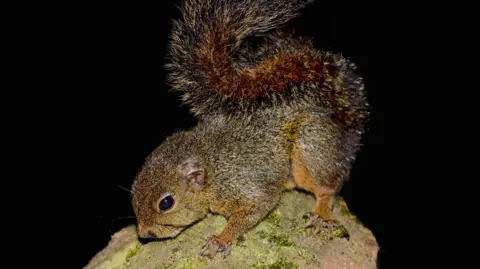 Ronald Díaz/ Conservation International
Ronald Díaz/ Conservation InternationalThis dwarf squirrel measures just 14cm (5.5in), half the length of an average gray squirrel in the UK, which ranges from 24cm to 29cm, according to the UK Squirrel Accord.
“(It fits) very easily in the palm of your hand. Adorable, beautiful chestnut brown color, very fast,” Larsen said.
“He jumps quickly and hides among the trees.”
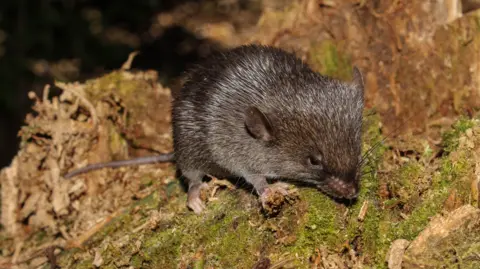 Ronald Díaz/ Conservation International
Ronald Díaz/ Conservation InternationalScientists have discovered a new species of spiny mouse, named for the especially stiff protective hairs found in its fur, which function similarly to the spines of a hedgehog.
They also found a new “amphibian mouse,” which has partially webbed feet and feeds on aquatic insects.
It belongs to a group of semi-aquatic rodents considered among the rarest in the world, and scientists have only detected the few species known to exist a few times.
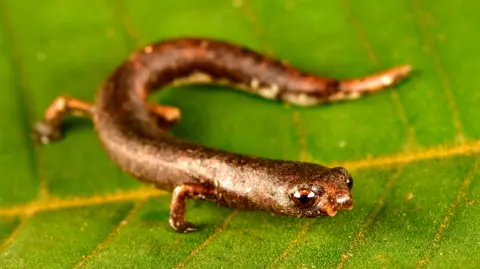 Trond Larsen
Trond Larsen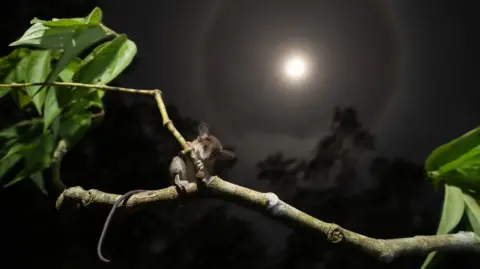 Marlon Dag/ Conservation International
Marlon Dag/ Conservation International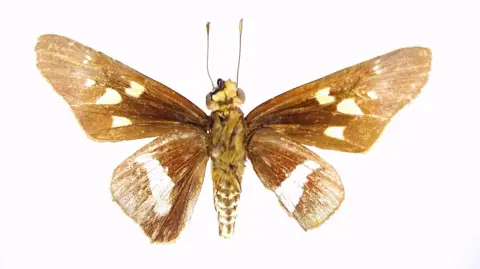 Gorki Valencia/ Conservation International
Gorki Valencia/ Conservation International